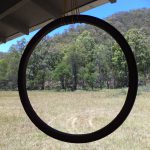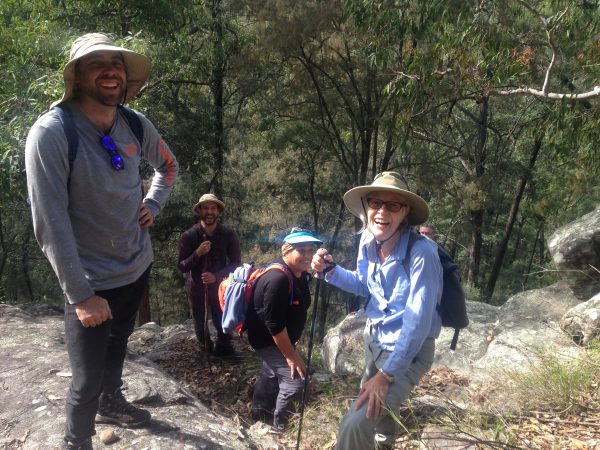Faith

We’ve probably all heard the expression, “The great way is not difficult, it’s simply a matter of not picking and choosing.” The great Zhaozhou uttered these words, but he was not the first. In Verses on the Faith Mind (Xinxin Ming), the third Chinese ancestor, Sengcan writes, “The Great Way is not difficult for those who have no preferences,” and added, “when love and hate are both absent everything becomes clear and undisguised.” But the saying is even older than that, and is part of the legacy from Chinese Daoism that Zen integrated into Buddhist practice in the early years of its development in China. The sentiment is even there at the most ancient layers of our legacy. The fundamental meaning of the Sanskrit word, “dharma”— “things just as they are”—resonates with Zhaozhou and Sencan’s words and points us in the direction of radical acceptance. The Four Noble Truths say in essence that picking and choosing, in the guise of attraction and aversion, are the root cause of suffering, and that there is a path to liberation through practice. You might be thinking: this is easy to say, but it is difficult to practice. Who among us can say that we are free of picking and choosing, or free of love and hate? Are we then failing in our practice?
I doubt that there is anyone among us who has not asked this question at some time or other. It’s all very well to have clarity and to be able to practice acceptance on a moment-to-moment basis when conditions are good; when we’re engaged in some sort of intensive practice, perhaps in sesshin, or involved in some intensive program of zazen, or when, apparently by pure chance, we find that our practice is “going well”. But what about when we lose that clarity? What about when we lose that ability to accept things and are gripped by a desire for things to be otherwise? What about when we fall off the bike?
A monk once asked Yunmen, “This is not the present function of mind. This is not the matter before me. What is it?” Yunmen cried, “One teaching upside down!” Here the monk is asking: if it’s not subjective (the present function of mind) and it’s not objective (the matter before me), what is it?” You might think that this is a good question, not one that is back-to-front or upside down, and you may be right, but Yunmen didn’t see it that way. He scolded the monk: “stop messing around with questions that belong in the relative world (subjective versus objective). That is getting it arse about face. Cut the crap and go directly to the great matter.”
When we frame our questions about losing clarity and equanimity in terms of gain and loss—when we set our apparently dismal practice against an ideal of clarity and equanimity—we, like the monk, are getting things arse about face, inside out, upside down, and back to front. An ideal of clarity and equanimity is nothing but a dead cat that we carry around with us, and it stinks to high heaven. In such moments, we are seeing the relative world (what Nagarjuna called “conventional reality”) as the true reality and our experience of empty oneness (Nagarjuna’s “ultimate reality”) as some form of temporary grace that we’re able to slip into from time to time, like a comfortable pair of shoes. Upside down! Back to front!
In fact, it is the world of empty oneness that is true and entirely un-confected, and it is the world of conventional reality that is entirely constructed and contingent. When we fully grasp this truth and hold to it as an article of faith, we can to some degree relax, secure in the conviction that our essential nature is right here, no matter what. It does not come and go.
How do we come by that conviction? Through dedicated practice and through repeated and sustained engagement with what is really true—with that which, when you experience it, is self-evident and unarguably itself. Things-just-as-they-are. True dharma. Although we may lose sight of this from time to time, it need not disturb our conviction about the true nature of the universe and ourselves. In time it becomes the basis on which we lead our lives.
Yunmen also said, “Within heaven and earth, in the midst of the cosmos, there is one treasure hidden in the body. Holding a lantern, it goes towards the Buddha hall. It brings the great triple gate (Sanmon) and puts it on the lantern.” In the unconstructed realm of our essential nature, placing that enormous temple gate upon the lamp is not so difficult. I once asked a student, “how about when you can’t manage that.” He said, “Holding a lantern, I go towards the Buddha hall.” A lovely response, don’t you think? What else can we do in those difficult moments but return to the dharma hall of our practice.
And how do we sustain this conviction? Well, this is where Faith comes in. Sengcan’s Verses on the Faith Mind expresses that faith in words of deep resonance and conviction: “the great way is not difficult, it’s simply a matter of not picking and choosing.” We live through deep faith that things-just-as-they-are is none other than our essential nature. No matter what!
Faith is not what first comes to mind when we think about Zen, but in fact it is fundamental to our ability to sustain our practice. The Faith Mind of the Zen Way does not require us to have faith in something that we have been told is true but have not experienced. Rather it requires us to have faith in what we have directly experienced as unarguably true, and this is what sustains us through difficult times. This is what allows us to climb back onto the bike each time we fall off.
These Encouraging Words were written by Allan Marett for the February/March 2018 Newsletter






